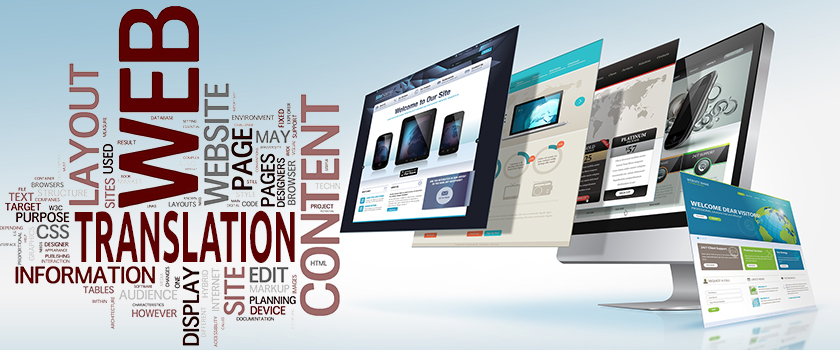2025 Offer Request a Quote Today and Grab a $50 Coupon for Free!
In this article, we are going to describe how you can translate infographics. And why is it important in today's day and age?
Fundamentally, an infographic is a visual representation of data or information. And the reason why we use infographics is to make things that are super complex to be a lot more accessible.
If we're talking about statistics or data. Some of us can readily read statistical information and absorb it. But a lot of us are not numerically inclined. So it helps to have a chart of some sort to represent that. And an infographic is just a step up from the usual one figure or two representation that you see.
There are a lot of different forms that an infographic can take. But the key is that the infographic is using visuals to display complex information in a way that's a lot easier for us to understand.
So, when do we use an infographic? Like we said, when it comes to numerical information, infographics can be really, really helpful.
Infographics can also be super helpful when you're comparing things. And we’ll share a visual comparison with some examples later in the article.
Visually, you can make play with scale so you can make some things bigger than others. And that is an immediate way for people to recognize it.
Let's discuss a few examples of infographics that are good. And a lot of these examples are from the Coronavirus which is where a lot of information is coming from right now. But it's also a really complex issue.
There's a lot of data coming out. Probably more data was collected than any other disease. And so it's hard to sometimes decipher what's important or what are the true results.
In this scenario, infographics have been really useful during this period in helping those of us that aren't scientists and aren't doctors to understand where major risks lie and sort out how to properly react during the Coronavirus.
So example number one is a heat map. And it shows different activities that we all engage in and their level of risk during Coronavirus.
For example, it has things like sports, and you can add things like getting a haircut. So, in all-day activities that we all engage in. But you can see on the map where the various risk lies.
Color is an indicator and scale is an indicator. Now the reason why this infographic is so good is that it visually takes things that we do every day and it makes it very easy to see quickly.
Whether or not we should do that, reading a long list of all these different activities might have trouble deciphering. However, in this infographic you know where the actual risk is vis-a-vis colors. Moreover, they also attract our attention.
Seeing something in red is a kind of red flag and poses the notion that you shouldn't do it. Hence, this is a super affected infographic because it takes a lot of information.
And it breaks it down the way that you can immediately figure out what the main point is and that creates judgments based on that.
Example number two also plays with scale. This is more of a pie chart, although it isn't your typical pie chart with slices down into subsections of different shapes.
And it relates to carbon emissions of different countries and based on the size of the portion of the circle that that country has, the greater their carbon emissions.
So this pie chart uses scale and colors like the heatmap. The lighter the color, the fewer carbon emissions, and the darker the color, the greater emissions. So it's almost like a cloud that's getting denser.
Again, you need a lot of data to track that but something like that, you could immediately see a correlation. And even for a person who's not an economist or a doctor, you would be able to see the risk there.
Infographics are a great tool to crunch down a great amount of information into a single graphical visual representation. They can improve the awareness of humans with visual representations that can enhance the human visual system's ability to understand patterns and trends.
Visual infographics can be seen almost anywhere now since it is being adopted by many people. There are many benefits of infographics and they have the potential to go viral and spread across borders.
The infographic can come across people with different cultural backgrounds and languages. It could be better if the infographic is translated into different languages. That way the infographic can be understood by many people regardless of the language barrier.
The infographic translation is challenging as an infographic is visually heavy with numbers and text which are small but significant. And it is essential that the infographic is recreated in different languages without disturbing any of its visuals.
Manual translation of the infographic is a lengthy process and requires a lot of effort. Creating infographics also requires graphic design skills.
Let's take a look at how to translate infographics automatically and without the need for any graphic designing skills.
Just follow the process step by step.
Step one is to create infographics in different languages. First, you have to search for www.imagetranslate.com. And then sign up by creating an account.
Step two. This is the step where you'll have to create a new project into image translate and add the infographic which needs to be translated.
To create a new project click the New Project button on the top right corner of the dashboard and upload the infographic that needs to be translated.
Select the languages to which the infographics should be translated. Select the source language that is the language in which the infographic actually is and the target language.
That is the language in which you want the infographic to be translated.
Click on the Next button. And after some time the infographic will be translated into the language of your choice.
So when should you not use an infographic?
You don't want to use an infographic, to sum up, a big long narrative story. Things like that are better suited to a rich picture, a journey map, something that can show the connections between various data points.
An infographic is really a good color for one single data set or one single insight or conclusion that you really want to draw attention to. It's not good for showing the whole story.
And it is surely not good for chronic cramping, like a bunch of different complex data points into something simple with an impact that can really make a case rather than like telling a whole story.
Do you know what it takes to create a unique and engaging infographic? Is it striking colors? Neat typography? Or sensational headlines? There are so many roads that your infographic could go down.
At its core, an infographic is supposed to be a quick and easy way of conveying information to your audience. It should visually appeal to the audience or convey essential data, build awareness and maybe even generate leads if you're using infographics for business purposes. So what makes an infographic effective?
Number one is information and honesty. We live in an internet age where fact-checking is easier than ever. So be sure that all the information in your infographic is truthful and honest.
If you provide figures from somewhere else make sure to add these figures with an asterisk in the resources.
Number two, legibility: although it's tempting to whip out the calligraphy style fonts in an effort to look fancy, you should prioritize fonts that are simple and easy to read.
Also, avoid making your infographic too busy. And try keeping the style on the minimalist side.
Number three; simple illustrations. Make your illustrations simple and ensure that they complement the data being conveyed in the infographic.
Complex illustrations will distract your audience from what's important; Your message. You're trying to communicate information not replace Monalisa.
Number four, unlimited colors. Limit your color palette if you're trying to create an infographic, which is visually appealing.
As a general rule of thumb, use three main colors with the lightest color forming the background and the danger of colors breaking up different sections.
Too many clashing colors will give your audience a headache.
Number five; interactive elements. Although adding interactive elements to your infographic is appealing, consider whether it is relevant to what you're trying to achieve.
If you need to convey a lot of information about different subjects, interactivity could be the easiest way to spread out this information without having to make your font tiny.
A lot of people have different preferences when it comes to infographics. However, generally speaking, and according to the experts, infographics in the scribing style are the most popular.
Such Infographics have a lot of impact especially if the vector graphics are very clean. As they are able to tell more of a story.
But such infographics are actually extremely challenging because you have to boil something numerical, and quite data-oriented into a punchy visual.
Infographics are visual representations of taking data and building a story around it that is digestible and easily understood.
Infographics can be a perfect resource to build brand awareness and position your company as an industry expert.
Including infographics in your content strategy is not only a great way to provide educational content to host on your site, but it also encourages others to share on their social accounts and their very own sites.
The more shares, the more engagement, the more mentions your infographic gets, and the more eyes will be in front of you.
When creating an infographic, think of what your audience would like to learn and share with their peers. Make the most of your data to create an impactful story, so people will recall your infographic and come back to your site to see what else you have to offer. Don't forget to include a catchy title.
Make it visually appealing and cite your sources and once it goes live, make sure to have an introduction above the image and an embed code beneath an infographic.
Now promote on social media and reach out to relevant sites. Encourage them to share your meaningful piece of content with their audiences.
Not a measure of success, we want you to dig around Google Analytics for landing page data and also look at increases in inbound links and those social media engagement metrics.
So instead of going ahead and posting another blog post that is just full of text, create a captivating infographic that will actually be read and shared.

Mars Translation provides high quality and professional Certified French Translation Services all over the world. We have a team of
Read more
Mars Translation provides one of a kind professional Chinese Document translation services all over the world. All of MT’s translators
Read more
MarsTranslation provides one of a kind Chinese Legal Translation Services. We have a team of native Chinese linguist who specialize
Read more
Chinese Certified Translation services is one of the most asked for service at MarsTranslation. We believe in providing quality services
Read more
Mars Translation is one of the fastest growing companies in the translation industry. This is the reason why we pay
Read more
MarsTranslation has a huge team of website translation specialists in more than 230 languages. Our translators are constantly supported by
Read more
Mars Translation provides high quality and professional Certified Spanish Translation Services all over the world. We have a team of
Read more
Mars Translation has hired some of the best and most experienced Danish translators to work on your translation projects. We
Read more
Medical terminologies are tough to understand and not easy to comprehend by everyone. Although these terminologies are difficult to understand
Read more

